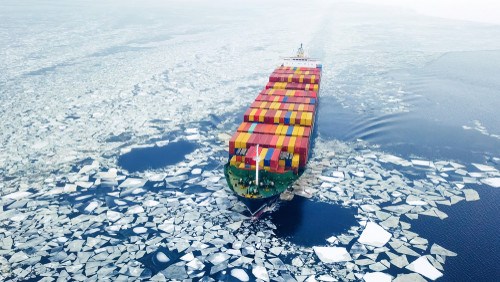Braemar reports that the macroeconomic outlook is sliding into a pre-recession lull with Chinese manufacturing down and demand in the Eurozone stagnating.
The extended Lunar New Year along with fear over the coronavirus triggered a sharp fall in Chinese shares when the market reopened after the New Year celebrations. “The Shanghai Composite index closed nearly 8% lower, its biggest daily drop for more than four years,” said the broker.
Manufacturing, materials, and consumer goods companies were among the hardest hit, while healthcare shares soared.
The 19 Eurozone economies showed little growth in the three months to December 2019 with initial estimates putting growth at around 0.1% quarter-on-quarter during the period.
“Markit/Caixin said its China manufacturing PMI came in at 51.1 for the month of January. That’s the slowest in five months. Slow demand dragged on China’s manufacturing activity, with total new orders weakening to a level not seen since September 2019. China’s National Bureau of Statistics said the country’s official manufacturing PMI came in at 50.0 for the month of January — an indication of stalled activity,” stated Braemar.

A brighter story is being told in the US which saw 2.1% quarter-on-quarter in the fourth quarter 2019. Even so last year saw gross domestic product decelerate to its slowest pace in three years amid a continuing drag in business investment. On an annualised basis, the US economy grew 2.3% year-on-year in Q4.
China is to pump a net RMB150 (US$22) billion into its economy on Monday to help protect it from the impact of the coronavirus outbreak. China’s central bank said the move would ensure there was enough liquidity in the banking system and help provide a stable currency market.
Liner and Trade
As a result of the deteriorating economic outlook in China in particular, the number of blanked sailings on the Asia-Europe trade are expected to more than double over the course of the first three months of this year, compared to the same period of 2019. Carriers are scaling back capacity in the slow post-Chinese New Year period.
“In a report published by Jacksonville-based Blue Water Reporting, as many as 58 voyages are due to blanked over the January-March period this year, up from 25 in the first quarter of 2019, a rise of 123% year-on-year,” reported Braemar.
Braemar said that there are reports that China has offered force majeure certificates to businesses as the coronavirus outbreak caused delays and congestion at its ports. Reports citing the China Council for the Promotion of International Trade, said businesses will have to provide documentation including proof of delays or cancellations for sea, air or land transport and related customs declarations to apply for force majeure.
“The developing situation of the Coronavirus and the extended Chinese New Year holidays logically will further hamper the return of tonnage back into the market after scrubber retrofit programmes and delay upcoming newbuilding deliveries in a similar fashion,” said the broker.

Braemar also noted that the sale and purchase market for post-Panamax container tonnage continued to be busy.
Notable transactions were Hyundai Confidence (5,700-TEU, built 2003 Hyundai H.I.) which was sold to clients of Embiricos at a reported $11.25m and the private sale of ‘SM Vancouver’ (5,468-TEU, built 2000 Aker MTW) and ‘SM Tacoma’ (5,456-TEU, built 2000 Kvaerner Warnow-Werft)) to GMS on a lumpsum basis at $10m each. The remaining vessels put on the sales block by SM Lines continue to be under discussion.
In the Panamax sector, Greece-based Thenamaris emerged as having committed ‘San Francisco II’ (4,860-TEU, built 2009 DSME) at a reported US$10.65m.
Demo prices are now showing signs of retreating slightly with a notable queue of large LDT dry bulk tonnage making the prospect of a continued rally somewhat unrealistic.







